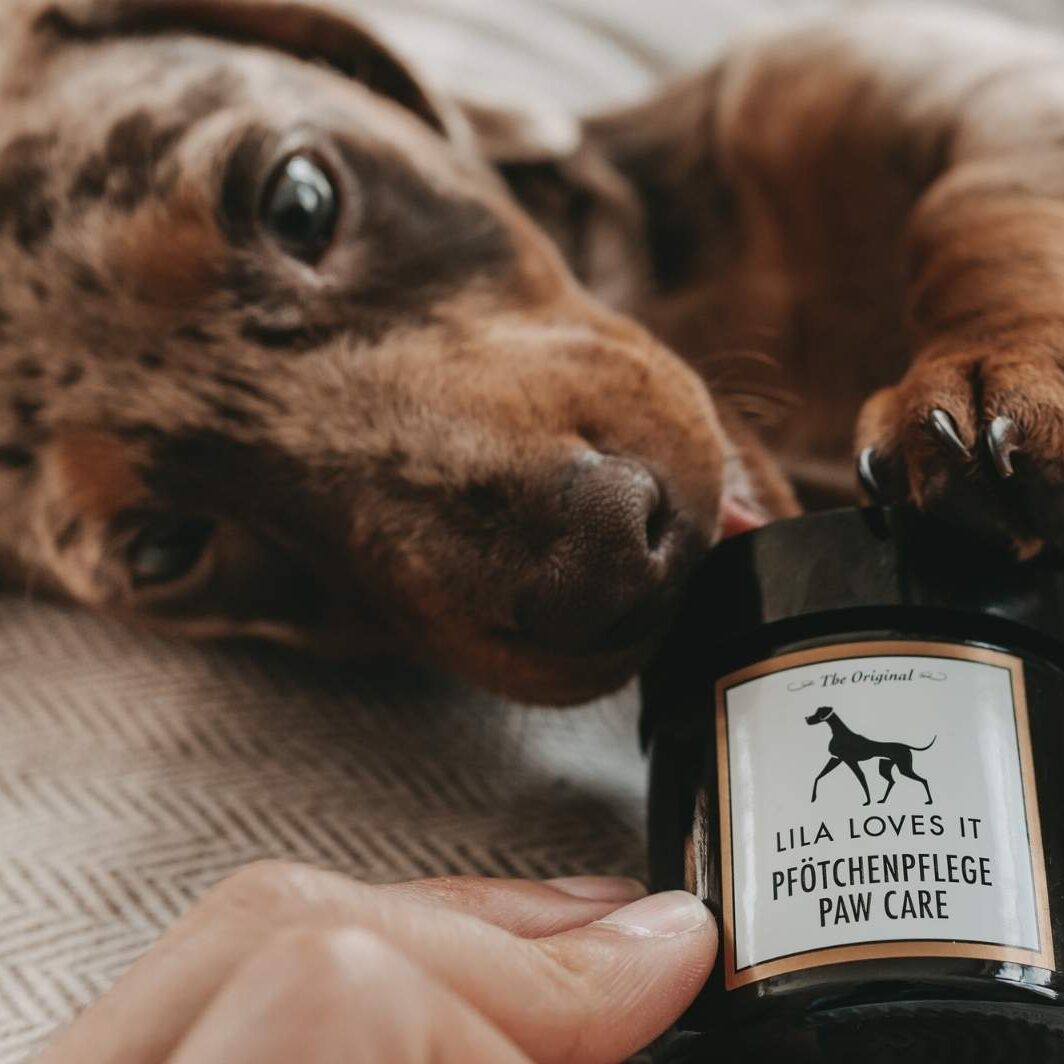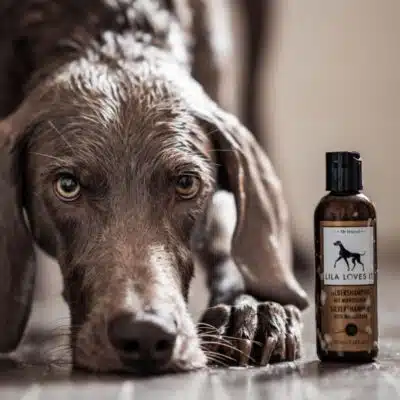The paw care routine
It’s best to include paw care in your daily routine – especially in winter! Snow, ice, grit and road salt can take their toll on your dog’s sensitive paws. Redness, brittle pads, cracks and itchy and painful sores can be the result. At this point at the latest, paw care is a must.
- Before the walk: Apply a high-quality paw care product to each of your dog’s paw pads before the walk. This creates a protective layer that keeps the sensitive paw pads safe from external influences such as salt and snow.
- After the walk: Wash and/or dry the paws If the paws are wet after the walk, you should definitely dry them. Otherwise, an effect called “maceration” can occur: the prolonged contact with moisture causes the tissue to soften. This is not only unhealthy for the skin, it also creates an excellent microclimate for bacteria and yeast fungi – a skin infection can therefore be the result. If the dog’s paws are very dirty, snow clods are hanging between the toes or you have been walking on paths with road salt, you should ideally wash them in a bowl or bucket with lukewarm water. This removes road salt residues and dirt and prevents them from attacking the paws.
- Check the paws. When the paws are clean and dry, check them for foreign bodies, redness, cracks, wounds and claw changes. Also look – at least occasionally – at the sensitive skin between the toes. If your dog licks or nibbles a lot on a paw, you should take a very close look at it. Such behaviour is often an indication that something is wrong. Also check whether the length of the claws is still OK. Too long claws can lead to the paw being loaded incorrectly and the pads being “worn out”.
- Optional: Reapplication of a paw care product
It is recommended to apply another thin layer of paw care to the pads, especially if the dog’s paws are stressed, rough and/or cracked. This way, the paws are optimally cared for and kept supple. And that’s it! As you can see, good paw care is very easy to incorporate into the daily routine. If your dog does not like to be touched on the paws, get him used to it slowly and, if necessary, get help from a professional who will train with you and your dog.
As simple as paw care itself is, it can be difficult to recognise a high-quality care product. There is now a confusingly large selection of paw care products – and unfortunately not all of them are equally suitable. So how do you tell if a grooming product is good or not? Here are some tips:
Natural ingredients
When choosing a paw care product, make sure that it contains only natural ingredients – ideally in organic quality. Many dogs quickly lick off the product they have laboriously applied. This means that the ingredients of the paw care product often get into the dog’s body, even if in small quantities. When choosing a product, make sure that the ingredients are listed. This is the only way you can be sure that the product does not contain anything that could harm your dog.
Better no Vaseline and no milking grease
Vaseline – and by the way also the very “natural” sounding milking fat (which consists mainly of petroleum jelly) – are so-called mineral oils, i.e. by-products of petroleum production. They can be potentially harmful to health and should therefore not be ingested by dogs. Another problem with petroleum jelly and milking fat is that the substances clog the pores and prevent the skin from breathing naturally.
Caring alternatives
Natural, fatty substances such as coconut oil or deer tallow are therefore more suitable. They also form a reliable protective layer around the paw pads, but are completely harmless to health if the dog actually licks off the paw care. Other herbal ingredients can support the soothing, caring effect – e.g. apricot kernel oil, lavender oil or calendula.
Natural cosmetics certification for particularly high safety in paw care selection
If you attach particular importance to your paw care containing only natural ingredients, you should choose a product with a natural cosmetics label – e.g. the “Natural Product Standard approved by BDIH” label, a certification of the BDIH (Bundesverband deutscher Industrie- und Handelsunternehmen für Arzneimittel, Reformwaren, Nahrungsergänzungsmittel und Körperpflegemittel e.V.). With a paw care product that bears this seal, you can be sure that you are holding a purely natural product in your hands. The label is only awarded after strict and regular checks of the ingredients contained and the production site.
Conclusion on paw care for dogs
Good paw care is not only useful to protect your dog’s sensitive pads and keep them healthy, it is actually quite simple. Especially in winter, you should therefore regularly – and preferably daily – take a few minutes to do this. We recommend our LILA LOVES IT paw care – a soothing and purely natural care product with coconut oil, lavender, calendula and beeswax. And by the way, it’s also great for calluses! Treat your dog to a high-quality care product – so that his paws stay healthy even in the cold season and your four-legged friend can continue to accompany you on walks!




